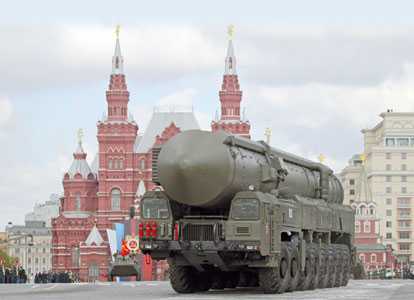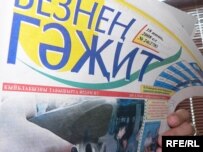by Dmitry Shlapentokh
22 December 2008
On the Dnieper and in Crimea, the notion is taking root that Eurasia’s true heart was never in Russia after all.
For centuries, nationalistic Ukrainian intellectuals have seen Ukraine as a part of Europe and hostile to Asians. And it was Russians who were dubbed Asiatics, descendants of the Mongols, who had nothing to do with civilized European Ukraine. The popularity among some Russian intellectuals of “Eurasianism,” with its emphasis and praise of Russia’s Asiatic-Mongol roots, handed post-Soviet Ukrainian intellectuals an additional reason for locating Russia in Asia, with Asiatics as the Russians’ major allies.
Nationalist-minded Ukrainian historians and politicians also began to witness a countermovement as, by the end of the Putin presidency, rising Russian nationalism increasingly disowned the notion, put forth by scores of Eurasianists from Lev Gumilev to Aleksandr Dugin, of the Mongols as engaged in a healthy “symbiosis” with Russians. In recent years Ukrainians also noted that in Crimea, which most Russians still regard as part of Russia, it was ethnic Tatars who were most loyal to Ukraine. This led to a dramatic reinterpretation of history. In the new version of Ukrainian idiosyncratic “Eurasianism,” Tatars, and indeed other Muslim peoples as well, became Ukraine’s “historical” friends who had fought alongside freedom-loving Ukrainians against their common primordial enemy, the Russian empire. The image of Tatars was recast in the Ukrainian mind from other perspectives as well. Tatar Asianness, essentially tainted by despotism and brutality, was displaced as a cultural and political phenomenon and became instead an integral part of civilized Europe.
Detail of a painting depicting the Battle of Konotop. Source:
Mузейний простір України.
EURO-EURASIANISM
The changing fortunes of the Crimean Tatars became a major driver of the growth of Ukrainian “Eurasianism.” Deported by Stalin during World War II and replaced by ethnic Russians and Russified Ukrainians, the Crimean Tatars were “rehabilitated” by Khrushchev and started to return to their ancestral lands by the late Soviet and, of course, post-Soviet era. Similar to the Chechens, the Crimean Tatars have never forgotten their misfortune and blame Russians – not just the regime but ethnic Russians – for this. This resentment is reinforced by the feeling that it was the Russians who took their property and land.
For their part, the Russian-speakers who make up the large majority of the Crimean population regarded Crimea, with Sevastopol – still the home port for Russia’s Black Sea fleet – as an essentially Russian place. They demanded either broad autonomy or outright unification with Russia. Kyiv, alarmed that the Russian-speaking Crimeans might come to play a role not unlike that of the Sudeten Germans in interwar Czechoslovakia, began to appreciate the Crimean Tatars, who although much smaller in numbers had emerged as a natural counterbalance to the Russian speakers of the peninsula and, by the logic of events, even to Russified eastern Ukrainians, who are seen by westerners as less committed to independence. These elements – their gravitating, at least by political logic, toward western Ukrainian nationalists and their coming to appear more pro-European than eastern Ukrainians – lend the Eurasianism of the Ukrainian Tatars a specific flavor quite different from the Russian variety. Russian Eurasianism, while emphasizing peaceful coexistence and nurturing a “symbiosis” between Russians and Asians, sees in this the foundation of a grand empire. Asiatic elements in Russian culture are also seen as a way to juxtapose Russia-Eurasia against, if not the entire West, at least America, and what are regarded as her East European stooges. Nothing of this sort can be found in Ukrainian Eurasianism. It is true that both Ukrainians and Crimean Tatar nationalists boast of their respective peoples’ military prowess in dealing with enemies, Russia first of all. Yet this history of military valor serves to underscore the defense of liberty and has no imperialist implications.
There are other differences. If for Russian Eurasianists the attachment to “Tatars” (not merely in the Crimea but the historical Muslim groups going back to the Mongol conquest) served to bind Russia closer to Asia, for the Ukrainians the same bond came to represent a European multiculturalism, the very fact that Europe, European civilization, includes not just white Christians but people of a variety of ethnic and cultural backgrounds.
Representatives of both branches of Eurasianism have actively appealed to historical analogies to substantiate their essentially dissimilar claims.
OUR FRIENDS, THE TATARS
This new vision of Ukrainians’ relationship with the Tatars, as well as with other Asian peoples, took form soon after the collapse of the USSR and the emergence of Ukraine as an independent state – visibly, in the changing displays at the Kyiv State Historical Museum, the goal of which was to propagandize the new official version of the Ukrainian past. Drastic rearrangement of the Soviet-era expositions led to the disappearance of the Mongol invasion of the Kyivan state, the pivotal event in that state’s history and that of many peoples of Eurasia. The future Russian state’s struggle with the Mongols, and, later, what most historians regarded as the liberation from the Mongol yoke, had been marginalized. The centuries-long conflicts of Ukrainians, Poles, and Russians with the Crimean Tatar vassals of the Ottoman Empire had also vanished. And at the end of the exposition hall dedicated to the “Orange Revolution” of 2004, regarded by Ukraine’s present-day rulers as the true watershed in recent Ukrainian history, you could read that Ukraine was a place of various minorities. Russians were not mentioned. At the same time, there was now a place for Jews and Tatars.
The Tatars’ old negative image in Ukraine is showing signs of reversing among historians and in the public mind as well, as opinions catch on that in some ways resemble those of such Russian Eurasianists as the scholar Lev Gumilev (1912-1992), who saw the dramatic events of the 13th century not so much as an overwhelming onslaught – the traditional view of pre-revolutionary and Soviet historiography – but rather as a “raid” that inflicted rather limited damage. This is also the view of some Ukrainian historians who downplay the devastation and argue that soon after the Mongol conquest of Kyiv, the capital of Kyivan Rus, foreign travelers found a vibrant trading community in the city, a sign of the limited extent of the destruction. Moreover, recent archeological work is cited as support for a hypothesis that the conquering impulses of the new rulers were subsiding and their energies increasingly channeled into city-building, trade, crafts, and similar exploits. These views of the Golden Horde fit well into the design of some leading intellectuals in Russia’s Tatarstan Republic. While regarding modern Tatars as the descendants of the Golden Horde, or at least not denying the Golden Horde as contributing to the formation of Tatar nationhood, one of these intellectuals, R.S. Khakimov, focuses not on the Golden Horde’s military prowess and associated brutality but on what he sees as the positive implications of Mongol statehood. In his view, its rulers were preoccupied not with bloodshed or conquest but with the development of crafts, trade, and culture.
This stress on the cultural achievements and broad religious tolerance of Tatars and Muslims in general not only enrolls them within European civilization but can be taken so far as seeing in them forerunners of true European values in an era when most other Europeans were behaving in a most “unEuropean” and “Asiatic” way. And while Tatar military prowess may now be downplayed when Ukrainian pundits comment on the Muslim conquests, it can also be re-emphasized when the Tatars are seen as the Ukrainians’ ally in fighting what is now regarded as Ukrainians’ historical enemies: the Russians.
PAST AND PRESENT
As friction between Ukraine and Russia has risen, history has become increasingly involved in providing justification for the present. This year, Ukrainian press accounts, bolstered by an article in the nationalist Russian newspaper Zavtra, laid claim to celebrate the Battle of Konotop as a great feat of Ukrainian military power.
In that encounter in 1659, a force of Ukrainians and their Crimean Tatar and Polish allies defeated with much slaughter a Russian army at Konotop in the north of today’s Ukraine. The triumph of Ukrainian leader Ivan Vyhovsky, successor to Bogdan Khmelnitsky, was not to last long; Vyhovsky soon faced rebellion in his own ranks and fled to Poland.
The Battle of Konotop is one of the manifestations of the complexity of Russia’s 17th-century war with Ukraine, one event in the bloody years of strife among Ukrainians, Poles, and Russians that ended in major territorial gains for Moscow. The clash has been transformed by present-day Ukrainian historians into an epic battle in which the foe numbered almost 100,000.
In these scholars’ thinking the victory at Konotop identifies Russia as the major enemy of the Ukrainians. More, it shows clearly that not only was the Ukrainian state already in existence in the 17th century but that it was a strong power, a worthy rival of Russia. According to one tale, upon receiving news of the defeat, the Russian czar trembled. The implication is that Russia was trembling not in fear of a potential Polish march on Moscow – the memory of the Time of Troubles when Polish troops occupied Moscow still fresh – but in fear of victorious Ukraine.
This interpretation, of course, leaves unexplained how this mighty rival of weak Russia was in the end incorporated into the Russian state. At any rate, what most concerns us is the role of the Tatars in these events. Here, the Tatars have emerged as a valiant ally who helped the Ukrainians defeat the common enemy. In an article published in June on a site for Russian Muslims, Islam.ru, pagan Russians are juxtaposed against monotheist Muslim Tatars or Ottoman Turks; it was no accident, according to this interpretation of events, that the victors presented some of the most important Russian prisoners taken at Konotop to the Ottoman sultan. It is a view of history in which Ukraine has not been the historical enemy of Asians, at least those who live in Europe, but actually their good friend. The same could be said for Ukraine’s historical relations with the Poles. The story is quite different for Russia. From a brotherly Orthodox country, it has been transformed into the primordial enemy of Ukrainians.
There is also a direct link between past and present. In the past, Ukrainians, Poles, and Muslims of various origin – civilized and freedom-loving people all – defended their liberties against the Russian imperial monster, the same as they do now, for Russia’s nature has not changed through time. In the eyes of some Ukrainian politicians, Russia continues to occupy part of historic Ukrainian land and subjugates the Chechens. Russia was and continues to be an imperial predator.
The unfolding of dramatic geopolitical changes – Russia’s increasing alienation not just from the West but from Eastern Europe, as well as from a good segment of her own Muslims, and the corresponding rapprochement between Ukrainians and the historic Muslim community in the Crimea – has driven this startling reversal. By dint of this growing Ukrainian “Eurasianism” Russia is cast into an “Asia” that is not so much a place as a cultural and political sign for despotism and brutality. At the same time the Tatars are pulled into Europe, a Europe not in the geographic sense but a symbol of the “civilized” West.
Dmitry Shlapentokh is an associate professor of history at Indiana University in South Bend.




